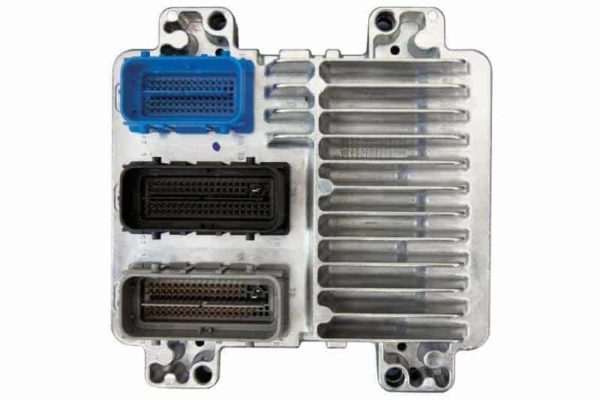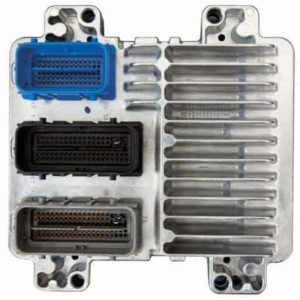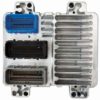Is Your 2008 GMC Canyon Acting Up? Let’s Get it Fixed.
If your trusty 2008 Canyon is suddenly giving you headaches—stalling at lights, running rough, refusing to start, or flashing a check engine light that won’t go away—the problem might be deeper than a simple sensor. The Engine Control Module (ECM), the computer that acts as your truck’s brain, could be the culprit. Over time, the constant heat cycles and vibrations from its location on the right-hand firewall can lead to internal failures, causing all sorts of frustrating and hard-to-diagnose issues.
A Technician’s Real-World Story
“A customer’s 2008 GMC Canyon came in last week with these exact symptoms. It had a persistent P0601 ‘Internal Control Module Memory Check Sum Error’ code that kept coming back no matter what we did. The engine would crank but not start intermittently, and when it did run, it felt sluggish. The owner had already replaced the spark plugs and a coil pack with no success. After verifying power and ground to the ECM, we knew the module itself was the issue. Swapping in a pre-programmed unit like this one had the truck running perfectly in under an hour, solving a problem that had plagued him for months.”
Common Symptoms of a Failing 2008 Canyon ECM
As a technician with over two decades of experience, I’ve seen hundreds of ECM failures. The signs aren’t always obvious, but they often fall into a few key categories. See if any of these sound familiar:
- ✔ Check Engine Light: An illuminated CEL is the most common sign, often with communication-related codes (U-codes) or internal processor fault codes (like P0601, P0606).
- ✔ No-Start or Hard Starting: The engine cranks but won’t fire up, or it takes an unusually long time to start. This can be intermittent, making it incredibly frustrating to diagnose.
- ✔ Poor Engine Performance: You might notice a significant drop in power, poor acceleration, rough idling, or a decrease in fuel economy.
- ✔ Erratic Shifting: The ECM communicates directly with the transmission control module. A failing ECM can cause harsh shifting, a failure to shift, or getting stuck in one gear.
- ✔ Communication Failure: Your mechanic’s scan tool may be unable to communicate with the ECM, making a proper diagnosis impossible.
The Direct, Reliable Solution: A VIN-Programmed ECM
Don’t waste time and money chasing down phantom issues or paying for expensive dealership programming. This Engine Control Module is the definitive solution for your 2008 Canyon. We take all the guesswork out of the repair.
Here’s how it works: After you place your order, you provide us with your truck’s 17-digit Vehicle Identification Number (VIN). Our technicians then use that VIN to flash the module with the absolute latest, most stable software directly from GM. This isn’t just a copy of your old file; it includes critical updates that GM released after your truck left the factory to address drivability, emissions, and performance. The module arrives at your door ready for a straightforward installation.
Guaranteed Compatibility & Fitment
This ECM is a direct replacement for part number 12603530 and is also a correct service replacement for several other GM part numbers. To ensure a perfect match, please verify that your original module has one of the following numbers printed on its label:
- ✔ 12590032
- ✔ 12602044
- ✔ 12603530
- ✔ 12605843
- ✔ 12607096
- ✔ 12630457
- ✔ 19210737
While this part is listed for the 2008 GMC Canyon, it also fits a wide range of other GM vehicles. Please consult the detailed fitment list to confirm compatibility if you are purchasing for a different model. The key is matching the service number on your original computer.
Installation Note
Installation is simple for a DIYer with basic tools. The ECM on the 2008 Canyon is located on the right-hand (passenger side) firewall in the engine bay. Always disconnect the negative battery terminal before beginning the replacement to prevent any electrical damage. Once the new module is installed and the battery is reconnected, you may need to perform a security relearn procedure, which can typically be done without special tools. This simple process restores communication and gets your truck back on the road for good.


